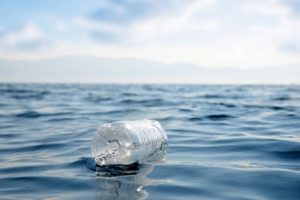Glyphosate is the active ingredient in the most widely used and most profitable herbicide in the world today. The prevalence of Glyphosate in our drinking water is highly concerning due to its potentially harmful human health effects. It is alarming to learn that so much of our food crops already expose us to Glyphosate. Still, studies clearly indicate we also consume larger quantities of Glyphosate in our drinking water than ever before. How much Glyphosate is in our drinking water, and how dangerous is it to drink glyphosate-tainted drinking water?
The Introduction of Glyphosate
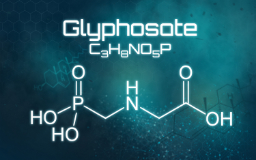
Glyphosate, a chemical herbicide, is the active ingredient in many popular weed-killer products. It was first created by a Swiss chemist working for the Cilag pharmaceutical company in 1950. Initially, it was abandoned due to its lack of pharmaceutical applications. However, after Aldrich Chemicals acquired Cilag, they continued to screen and test the substance, and promising biological properties emerged. In 1964, Glyphosate received its first patent as a descaling and metal-chelating agent for cleaning boilers and pipes. It wasn’t until 1971 that Glyphosate received a patent as a herbicide, and it was introduced to the market by the Monsanto Corporation in 1974. Since then, it has become the leading pesticide in the industry.
The Overwhelming Growth of Glyphosate
Since Glyphosate’s introduction over two decades ago, there has been a steady increase in agricultural and non-farm applications. In 1976, the introduction of “Roundup Ready” crops saw sales and use skyrocket. In 1974, approximately 0.79 million pounds of Glyphosate was applied, and by 2007, agricultural applications had reached 180 million pounds in the United States. The new Roundup Ready crops include varieties of soybeans, corn, sugar beet, and cotton that are genetically engineered seeds coated with Glyphosate, which resist dying and simplify weed management. As Glyphosate is one of the most successfully created weed killers, it is no surprise there is an exponential increase in the use of genetically modified crops due to their high weed-killing abilities and productive harvests.
Glyphosate is estimated to be used in more than 750 products in urban, home, forestry, and agricultural applications. Monsanto first introduced Glyphosate in 1974, and by 2010, it was actively used in over 130 countries. Sadly, it is almost impossible to think that most humans have not had some exposure to glyphosate, whether from working with it, eating contaminated produce, using it in home gardens, or ingesting it through drinking water.
The Discovery of Glyphosate in Our Drinking Water

Because of its wide use in agriculture, lawn care, gardening, and forestry, Glyphosate is often found in urban and rural waters. It can quickly enter the surface and subsurface waters after direct applications near aquatic environments, runoff, or leaching from terrestrial applications. Due to its high affinity to bond with the soil, it is also likely to contaminate the surrounding groundwater.
Glyphosate is a growing concern as it infiltrates wells and municipal water if not appropriately treated. It is essential to educate the public on the dangers of Glyphosate in their drinking water and ensure any water from private wells, springs, or lakes should be tested for the presence of Glyphosate.
The agricultural and urban use of Glyphosate is attributed to contaminating surface waters. It enters tap water through agricultural runoff as well as from soil erosion. Glyphosate that is applied to hard surfaces can have high amounts of runoff in the water. Recent studies have shown that glyphosate-based pesticides can affect cell regulation in plants and animals. This raises concerns about the potential health risks associated with consuming Glyphosate through drinking water by humans and animals.
Unfortunately, if Glyphosate is found in the water supply, it is not easily broken down by water or sunlight. The median half-life of Glyphosate in water varies greatly from a few days to 91 days; in Iowa, one site recorded a half-life of 141 days. The median half-life of Glyphosate in soil averages 47 days but can last as long as 197 days. Water with low light conditions can hold Glyphosate for up to 171 days and persist for up to 300 days in dimmer areas, increasing the risk of drinking water contamination.
Is Glyphosate Safe at Any Level?
The U.S. federal Safe Drinking Water Act has deemed Glyphosate a primary drinking water contaminant. The Environmental Protection Agency or EPA has classified Glyphosate as “not likely to be a carcinogen (cancer-causing). However, the International Agency for Research on Cancer does classify Glyphosate as a probable carcinogen.
The Environmental Working Group (EWG) has set its health guideline at 5 ppb (parts per billion) for Glyphosate. In contrast, the Environmental Protection Agency (EPA) established the Maximum Contaminant Level (MCL) of 700 ppb (parts per billion) in 1992 for the United States. The MAC, or maximum acceptable concentration in Canada, is set at 280 ppb in drinking water. The EPA level was developed from a 1980 animal toxicity study that did not account for the risks to children’s health or cancer risks.
Individual states may set allowable glyphosate levels lower than the EPA standard to protect those most vulnerable to any harmful effects from the contaminant. For example, the Minnesota Department of Health has set a guidance value of 500 ppb (parts per billion) of Glyphosate accepted in drinking water, which is somewhat lower than the EPA standard. Yet, it is still much higher than the EWG or Environmental Working Group recommendation of 5 ppb (parts per billion), a much more rigid and safer drinking water level.
The Health Threats of Glyphosate
According to the Pesticide Action Network of Europe, Glyphosate threatens the health of humans and several animal species, but it does not stop there. They also claim it is threatening agriculture and biodiversity. These concerns have caused European citizens to call to ban Glyphosate.
Evidence suggests that ingesting Glyphosate can produce several adverse health issues. According to EWG, Glyphosate has been linked to cancer for several years. Recent human studies suggest exposure during pregnancy is linked to shorter pregnancies, lower birth weight, and fetal development issues. A recent peer-reviewed study reported that children exposed to Glyphosate are at higher risk for liver and metabolic diseases. Evidence shows that exposure to even low concentrations of Glyphosate can stimulate human hormone-dependent cancers.
There is concern that if Glyphosate combines with nitrite in the diet, it could react and form a new chemical – NPMG, a possible carcinogen. California has classified Glyphosate as a chemical that can cause cancer. Glyphosate, the main ingredient in many week-killers, has been the subject of thousands of lawsuits claiming that Glyphosate causes cancer.
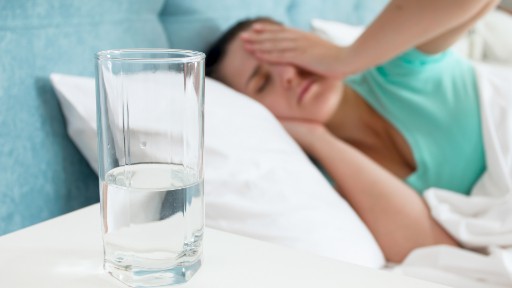
Current evidence suggests that ingesting Glyphosate in drinking water can produce a number of adverse health effects;
- Cancer Potential: One of the most significant concerns is its potential link to cancer. In 2015, the International Agency for Research on Cancer, a branch of the World Health Organization (WHO), classified Glyphosate as “probably carcinogenic to humans” based on evidence of its association with non-Hodgkinn’s lymphoma.
- Developmental and Reproductive Effects: Some studies have indicated that exposure to Glyphosate may be linked to adverse developmental and reproductive effects, including reduced fetal growth, potential impacts on fertility, and developmental abnormalities. Research is ongoing to establish more substantial evidence.
- Endocrine Disruption: Evidence suggests Glyphosate might have endocrine-disrupting properties that can interfere with human and animal hormonal systems. Adverse health effects may occur, especially during critical developmental stages.
- Microbiome Disruption: Emerging scientific evidence suggests that glyphosate exposure could negatively impact the gut microbiome, which is crucial in maintaining overall health. The microbiome has direct effects on mental health, immunity, and digestion.
- Genotoxicity: Glyphosate has been associated with causing DNA damage, possibly leading to cell mutations. Genotoxicity creates an increased risk of cancer and other concerning health issues.
- Neurotoxicity: Evidence from some animal studies suggests that neurotoxic effects may result in the nervous system and brain development with glyphosate exposure. Further research is needed to assess these effects on humans.
- Acute Health Effects: There is low acute toxicity in humans unless high concentrations of Glyphosate are ingested. Large amounts of glyphosate ingestion may cause vomiting, diarrhea, and gastrointestinal discomfort. Glyphosate also produces oxidative stress, which is associated with several damaging health issues and negatively affects our natural aging process.
It is of great concern that some of the largest companies creating products using Glyphosate have chosen to ignore the IARC and its findings as a probable carcinogen and conducted their own private studies. The pesticide companies claim Glyphosate is safe and does not cause cancer. Concerned consumers and environmental groups continue to protest and legally challenge the pesticide companies producing and selling glyphosate products.
Is My Drinking Water Glyphosate Contaminated?
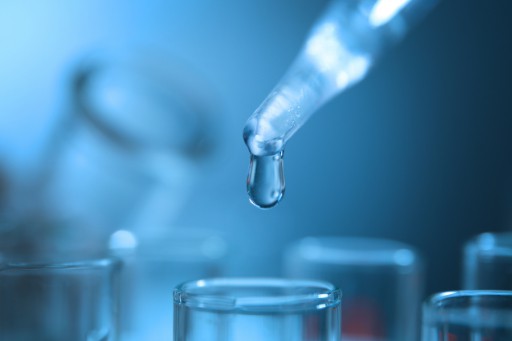
The best way to determine if your drinking water is glyphosate-contaminated is to have a comprehensive certified water analysis done by a water quality professional. A complete water analysis will test your water for volatile chemicals, minerals, and other contaminants and provide a detailed report with the recommended water treatment solution. If test results are positive for Glyphosate, a water treatment professional can recommend the safest and most efficient water purification system for your home.
How To Remove Glyphosate From Drinking Your Drinking Water

A Reverse Osmosis Water Filtration System is one of the most effective ways to eliminate unwanted Glyphosate and many other hazardous chemicals from your drinking water. Reverse osmosis systems are cost-effective and environmentally friendly, removing up to 99% of harmful contaminants without using chemicals.
The Reverse Osmosis System pushes water through a semi-permeable membrane that filters out hazardous chemicals such as Glyphosate, PFAS, and several other harmful contaminants. The filter only allows fresh purified water through to a specific reverse osmosis tap and can also be installed into your refrigerator’s cold water line and ice maker. Most RO Systems are easily installed under the kitchen sink and require little or no electricity, making them a wise financial choice.
A Whole Home Reverse Osmosis Filtration System will also remove Glyphosate while providing purified water from each tap throughout your home. The Whole Home Systems are more extensive, usually requiring installation in the basement, and are also a more significant investment.
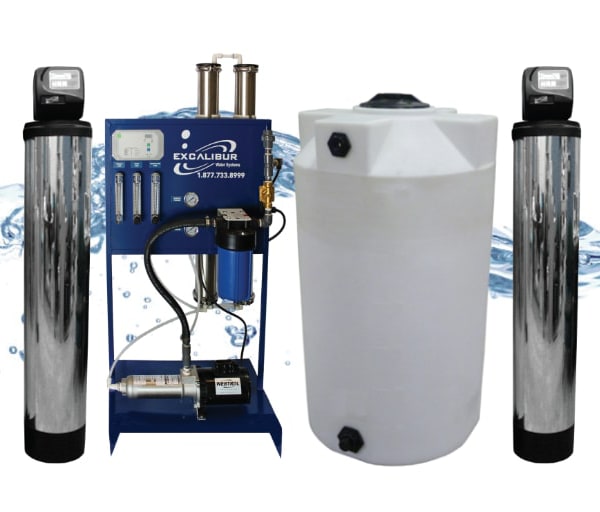
If your drinking water comes from a lake or well, a Whole Home Nanofiltration System is one of the best methods for removing Glyphosate from your drinking water. Nanofiltration also uses filtration with a semi-permeable membrane, which allows water to push through, trapping the harmful contaminants down the drain while leaving only fresh, pure, filtered water.
With the extensive amount of Glyphosate currently in use, being sprayed on crops, or from the Glyphosate GMO seeds planted, or the leaching of Glyphosate from farms and factories into our ground and surface waters, we are now consuming more Glyphosate in the water we drink. One thing is certain: our drinking water should be safe and pure from toxic pesticides and chemicals.
At Excalibur, several Water Filtration Systems remove harsh and harmful chemicals (including Glyphosate) to fit your water purification needs. Please contact us for a free water analysis and more information.


